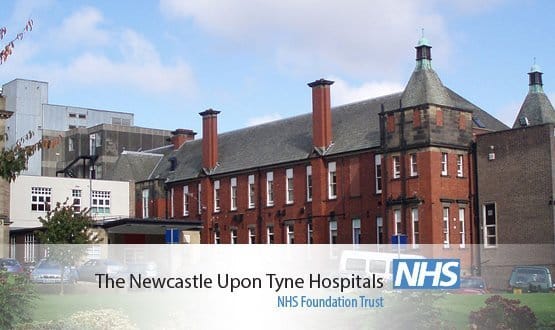Group discussion
- 11 November 2013

Guess how much of the world’s data storage is devoted to medical imaging? The answer, as revealed at the UK Imaging Informatics Group annual meeting, is 30%; although the proportion has declined since the advent of YouTube.
While clips of cats, toddlers and teenaged pop stars may have made a measurable dent in the proportion of worldwide data storage devoted to imaging, however, the absolute volume of medical images continues to increase.
In fact, the group’s chair, Dr Mark Griffiths, told the conference at EHI Live 2013, that most trusts are setting a 20% year on year increase in their data storage requirements.
This makes information lifecycle management – a set of strategies for managing data records from the point of creation to archiving and eventual deletion – a live and lively issue.
To store or not to store?
Unfortunately, it is not an easy one to grapple with. As Dr Griffiths explained that there are complex legal rules covering the length of time for which different types of images, relating to different types of patients, must be stored.
And, as Graham King of Perceptive and John Victor of Carestream, went on to explain, there are some real technical challenges in implementing ILM through vendor neutral archives and picture archiving and communications systems, respectively.
For example, said King, data in the PACS and the archive have to be synchronised, but the DICOM standard doesn’t have a way of sending a message to convey that a record has been deleted at the moment. This is being addressed by the development of imaging object change management, an emerging IHE profile, currently in trial.
Audience discussion focused on whether, given the cost and complexity of ILM, it is worth doing at all. Dr Nicola Strickland of Imperial College Healthcare NHS Trust took the view that, for the most part, patients had no interest in whether their images were kept or deleted.
She suggested that a simpler and cheaper solution would be to retain all images for 30 years after death. “Radiologists should set a precedent and stop being so wet,” she said.
Dose monitoring
Another lively issue is radiation dose monitoring. Ian Chell of the Department of Health outlined proposals for a new working party to make recommendations on national dose levels, ahead of the UK’s implementation of a forthcoming European directive on radiation protection.
Again, the issues are complex. Ian Judd of Sectra listed a few of the hurdles to be overcome as finding a way to automate data collection, to track patients across care episodes, and to provide dose information to patients in a meaningful format.
On the other hand, radiologists are united in their desire to find a way to both measure and reduce the doses of radiation to which patients are exposed over time.
Judd illustrated the consequences of neglecting dose monitoring by talking about Cedars-Sinai Medical Center in the US, which mistakenly administered up to eight times the normal radiation dose to more than 200 patients.
Connect and Share
The group’s annual conference also heard several presentations on standards for sharing documents. Steven Jessop of Burnbank Systems introduced Connect and Share, Burnbank’s extension to the Image Exchange Portal.
Connect and Share, which is based on the XDS standard, will make it possible to share radiology reports and referrals as well as images. It is being piloted at University Hospitals Bristol NHS Foundation Trust, and will be available to other trusts before Christmas.
The Salisbury, Wight and South Hampshire consortium took another approach to image sharing. When it needed to replace its national PACS and RIS contracts, it used an XDS-based vendor neutral archive to share data across the trusts involved.
Nick Sargeant, the technical architect based at Portsmouth Hospitals NHS Trust, outlined the challenges of devising and implementing the most efficient architecture for sharing data across the four trusts.
Originally, the plan was for each trust to have its own PACS and VNA, and for the trusts to share an XDS registry.
It became clear, though, that this would involve creating multiple ‘pipes’ between trusts; as an image request was sent to the registry from one PACS client, then retrieved from a trust’s VNA and sent to the requesting trust.
Working with suppliers, the trusts developed an alternative hub-and-spoke architecture in which a single VNA was located centrally. “The difficulties were moving from an IHE-based standard, which says that this is the ideal flow, to mapping it onto a real world architecture involving real trusts,” said Sargeant.
Quality assurance
The group was given a flavour of a radiologist’s life across the pond in a talk by Jim Sapienza of MultiCare Health Systems, a not-for-profit healthcare provider in Tacoma, Washington, which has implemented a software-based quality assurance system that evaluated its radiologists on six metrics.
The data generated by the system allows the provider to review trends by modality and site, enabling them to identify particular problems. The radiologists – who work for three separate companies serving the healthcare provider – receive bonuses for meeting targets.
The first day closed with a talk from Dr Nicola Strickland on the draft teleradiology white paper on produced by the European Society of Radiology working group.
She made a forceful case for maintaining the professional status of the profession, and to avoid a future where teleradiology was used purely as a means of reducing cost.
The advent of cross-border teleradiology was inevitable, she said, but radiologists should have a say in how it was implemented. “It’s important to get in there and shape the future, rather than have something imposed on us by the EU and then try and get out of it,” she said.
Dr Strickland expressed concerns that, without monitoring of standards, there would be a “race to the bottom.” Radiologists should, she added, make “positive suggestions as to how we can preserve standards in the interests of the patient and our profession, keeping in mind that the patient has to remain central.”
Learning from mistakes
The Wednesday speakers focused on lessons learned from the first phase of the refresh of the PACS and RIS market, caused by the end of the contracts placed by the National Programme for IT in the NHS a decade ago.
Alasdair Thomson, national PACS manager, stressed that a big lesson was not to underestimate the challenges of data migration.
He suggested that trusts should also take away the importance of a transparent relationship with suppliers and the importance of writing an exit plan into the contract.
Other speakers talked about the lessons learnt in their own trusts. Heidi Killoran, PACS manager at Salisbury NHS Foundation Trust (part of the SWASH consortium), described the whole process as “gruelling”.
She emphasised the need to consult users before writing the specification by asking them what they need to do their job well – but also to bear in mind that most users don’t like change.
Many of the problems were hard to foresee, said Killoran. When the data migration was completed, the trust found that all the images were damaged, and the work had to be redone. She also had some resolutely practical tips, such as: “Make sure you have somewhere to store your new PACS workstations.”
Changing systems takes time
All the speakers said that the process of procurement and implementation took far longer than anticipated. Unexpected events have the power to throw the process off course, said Dr Stephen Fenn, a consultant radiologist at Hampshire Hospitals NHS Foundation Trust.
In Hampshire’s case, this ranged from a new PACS rejecting poor-quality data from the old PACS to a fire in the MRI scanner room at the Royal Hampshire County Hospital. Proof, if it were needed, that you should always expect the unexpected.




